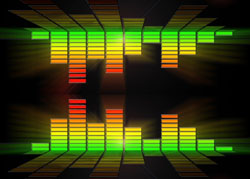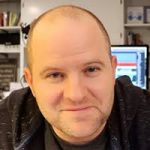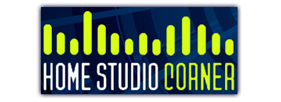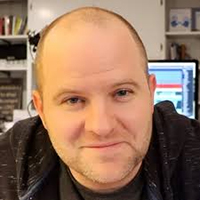We tend to think of EQ as “makeup” for our tracks. We use it to make things purdy.
But EQ can be a pretty handy tool for faking out your listener. And sometimes those fake-outs can be kinda cool.
Here are a few:
1. Fake Depth
Sometimes tracks are recorded so cleanly that they sound too “up front” no matter how much you turn them down.
It’d be nice if you could just make ‘em go sit in the corner.
Well, with EQ you can. Rolling off some high end can make them sound more distant.
It’s like walking to your car when leave a concert early. The farther away you get from the venue, the less highs you hear.
Up next…
2. Fake Tape Saturation
I’ve never owned a tape saturation plugin. (Go ahead, make fun of me.)
I’m not against ‘em, and I’ll probably own one eventually. But for now I’ll fake it.
Now, tape saturation adds extra harmonic content to the signal, which oftentimes softens the sound, removing a little of the harshness from the highs.
I was mastering an EP last week, and the highs were just a little harsh.
Since I didn’t have a tape saturation plugin, I reached my trusty friend, Mr. EQ. I just used an ever-so-gentle filter to roll off just a teensy bit of high frequencies.
And? It softened up the sound and worked nicely.
Now of course the EQ didn’t add any cool harmonics like tape saturation, but it still allowed me to “soften” the sound.
And finally…
3. Fake Reality
This one’s a little odd.
On my last album, there was one piano ballad. The piano was a fake one, a virtual instrument in Pro Tools.
It sounded good, but a little too good.
So I used EQ to make it sound worse, thereby making it sound more real.
Instead of a pristine, crisp, bright piano sound, it sounded a bit muffled and more like an imperfect recording of an actual piano.
And you know how I like imperfection.
So there are three ways to use EQ to fake-out your listeners.
To learn more about how to manipulate your tracks with EQ for both good and evil purposes (muahahaha), head over here: www.understandingEQ.com
Joe Gilder is a Nashville-based engineer, musician, and producer who also provides training and advice at the Home Studio Corner.Note that Joe also offers highly effective training courses, including Understanding Compression and Understanding EQ.





















